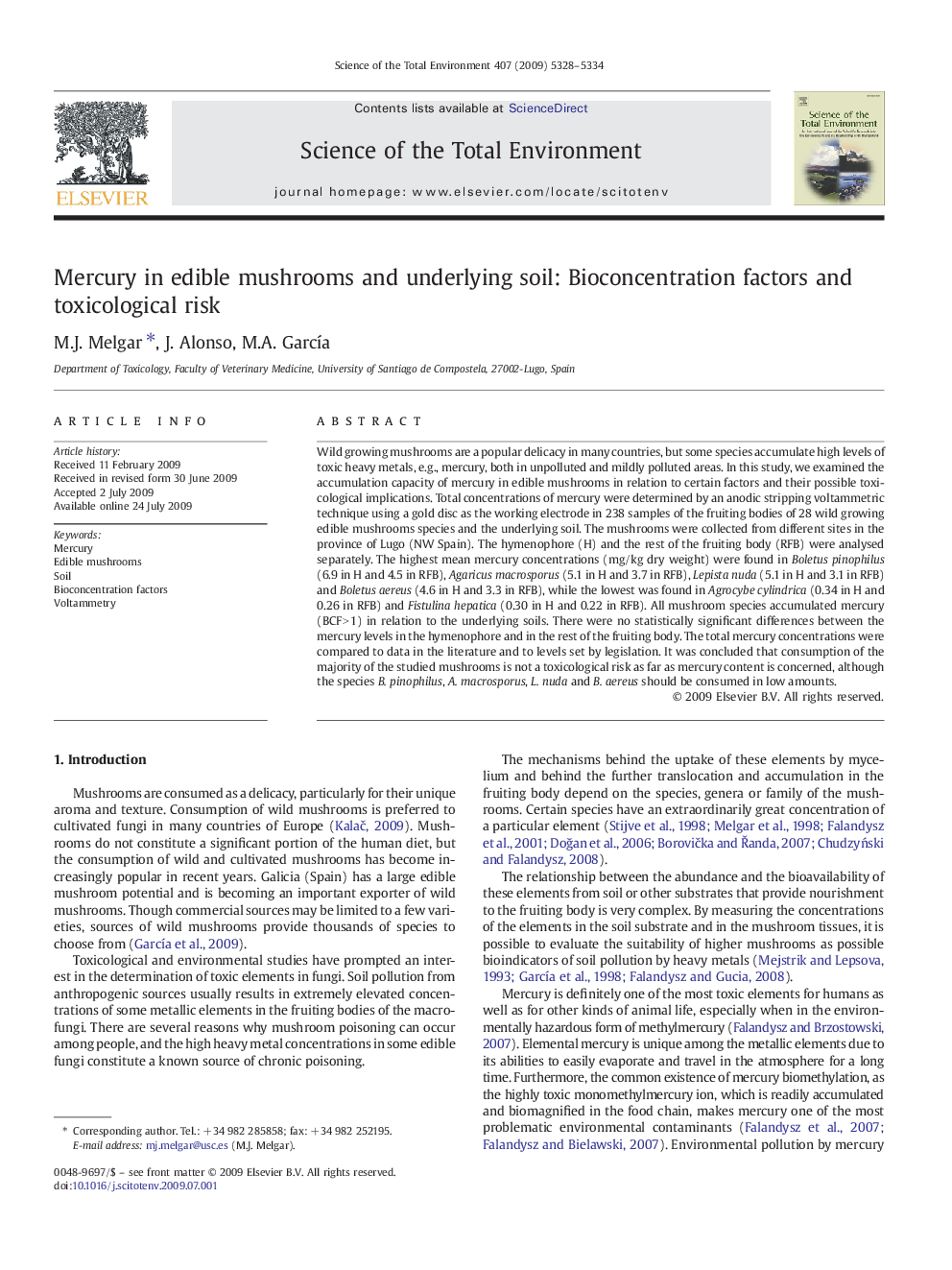| کد مقاله | کد نشریه | سال انتشار | مقاله انگلیسی | نسخه تمام متن |
|---|---|---|---|---|
| 4431106 | 1619890 | 2009 | 7 صفحه PDF | دانلود رایگان |

Wild growing mushrooms are a popular delicacy in many countries, but some species accumulate high levels of toxic heavy metals, e.g., mercury, both in unpolluted and mildly polluted areas. In this study, we examined the accumulation capacity of mercury in edible mushrooms in relation to certain factors and their possible toxicological implications. Total concentrations of mercury were determined by an anodic stripping voltammetric technique using a gold disc as the working electrode in 238 samples of the fruiting bodies of 28 wild growing edible mushrooms species and the underlying soil. The mushrooms were collected from different sites in the province of Lugo (NW Spain). The hymenophore (H) and the rest of the fruiting body (RFB) were analysed separately. The highest mean mercury concentrations (mg/kg dry weight) were found in Boletus pinophilus (6.9 in H and 4.5 in RFB), Agaricus macrosporus (5.1 in H and 3.7 in RFB), Lepista nuda (5.1 in H and 3.1 in RFB) and Boletus aereus (4.6 in H and 3.3 in RFB), while the lowest was found in Agrocybe cylindrica (0.34 in H and 0.26 in RFB) and Fistulina hepatica (0.30 in H and 0.22 in RFB). All mushroom species accumulated mercury (BCF > 1) in relation to the underlying soils. There were no statistically significant differences between the mercury levels in the hymenophore and in the rest of the fruiting body. The total mercury concentrations were compared to data in the literature and to levels set by legislation. It was concluded that consumption of the majority of the studied mushrooms is not a toxicological risk as far as mercury content is concerned, although the species B.pinophilus, A.macrosporus, L.nuda and B.aereus should be consumed in low amounts.
Journal: Science of The Total Environment - Volume 407, Issue 20, 1 October 2009, Pages 5328–5334